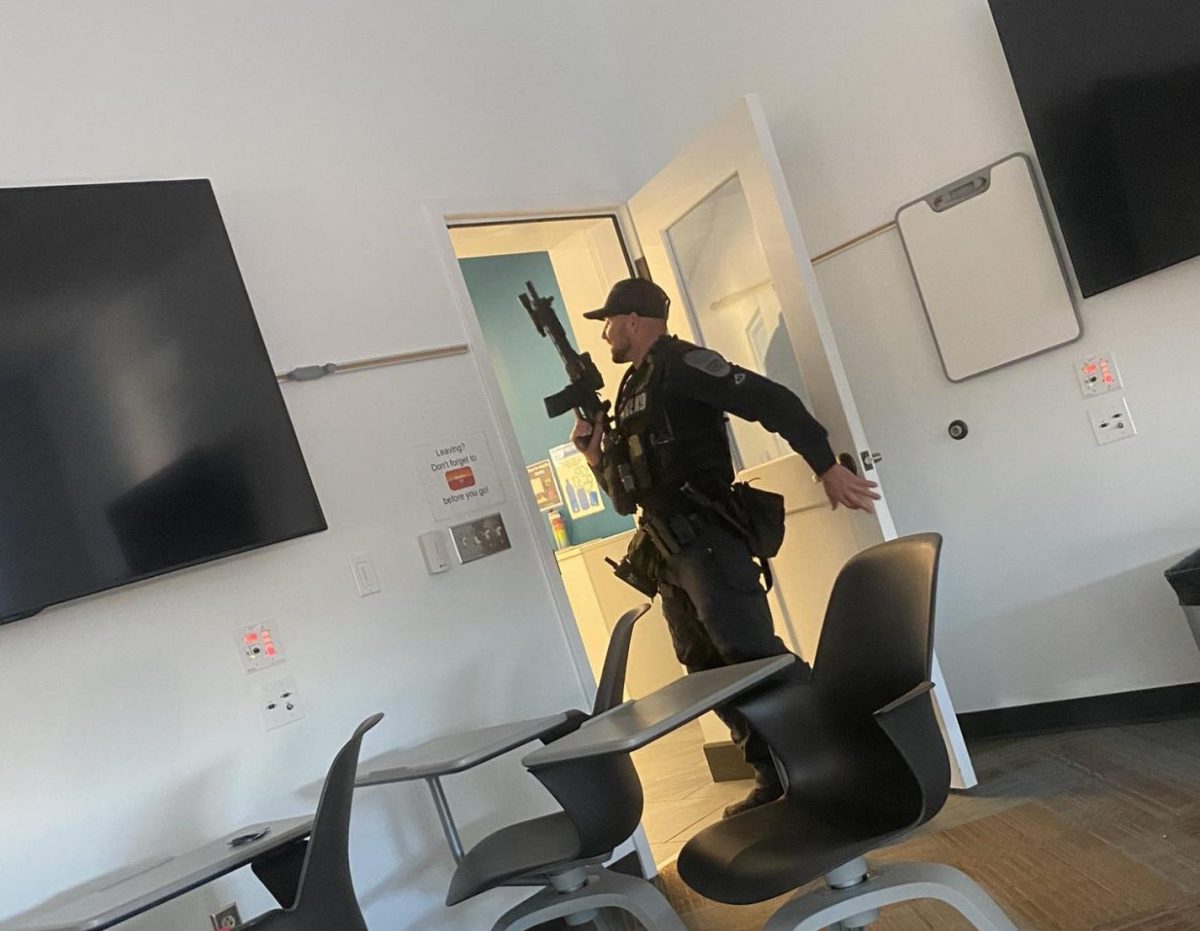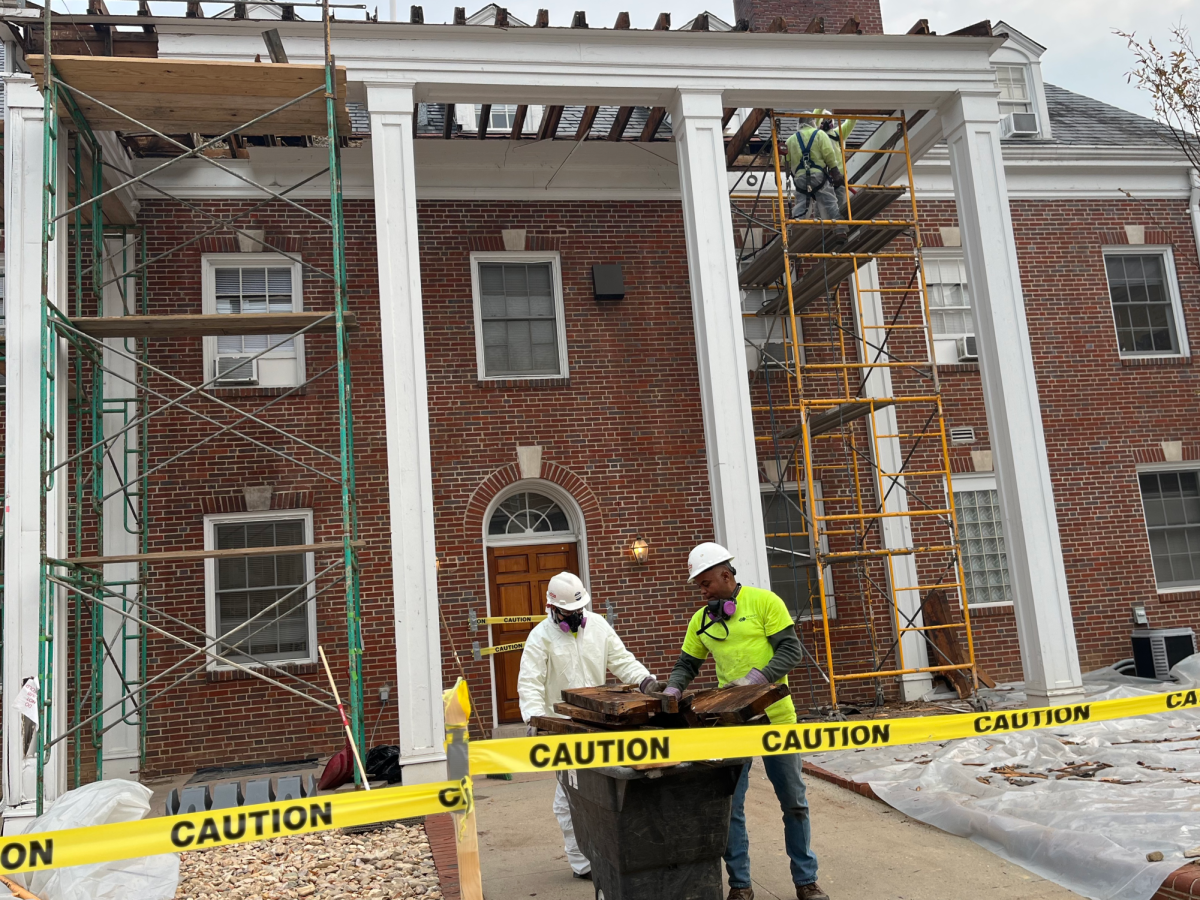Editors’ note: This story was first posted at 10 a.m. on Sept. 23, but was updated at 8 p.m. to include information from a university announcement released at 11:40 a.m. The update also includes clarifications regarding the university’s policy for campus evacuations and Public Safety’s summer training.
Students are calling for clarity on the university’s Emergency Management Plan, citing confusion in the handling of this summer’s bomb threat.
An anonymous threat of violence was received by the university on July 10, sparking a seven-hour investigation before university officials announced there was no active threat to campus safety. More than 200 students and 75 professors involved in summer research and immersion programs were asked to evacuate campus while law enforcement conducted a building-by-building search, according to previous reporting from the Phi.
While the bomb threat was cleared without incident, the university’s handling of the evacuation and following events is still questioned on campus. As the Phi reported previously, students encountered uncertainty on where to report to, or who to report to, that day.
With many students on break, those on campus in July included Advanced Immersion and Mentoring (AIM) scholars, summer research scholars, and members of the Governor’s World Language Academy.
During an interview, AIM scholar Yoisel Rodriguez Toledo, ’28, said he first learned of the July 10 threat through his AIM GroupMe, not university communications.
“And at that point, I was like ‘Is this some kind of joke?’” he said.
The AIM group soon evacuated campus — per instructions from the university’s emergency alert system — and stayed at the local cafe Pronto for several hours before moving to Rockbridge Regional Library, Rodriguez Toledo said.
Both Pronto and the Rockbridge Regional Library are not on the university’s list of designated assembly areas, as defined by the Emergency Management Plan. These designated assembly areas are referenced in five parts of the Emergency Management Plan and are designed to be places where people can go until they “are accounted for and/or receive further instructions.” The list provides the addresses of most buildings on campus and their designated assembly spot – most of which are located within Washington and Lee’s campus.
In the case of a campus-wide disaster that requires evacuation, university officials “will contract with vendors and/or make arrangements with other local or regional organizations to provide buses, vans, or other vehicles” to transport students, faculty and staff away from campus, according to the Emergency Management Plan. Those who have their own vehicles are “encouraged to carpool with others,” according to the plan, but no list of safe off-campus locations is provided.
Knowing where to go in the event of an emergency is crucial for future safety, said Keegen Dzurko, ’28, who was on campus as another AIM scholar — especially if 2,000 students have to get off campus, not just 200.
“I know a few places in town because of AIM, but most people who aren’t from around here wouldn’t know where [to go],” he said. “They may not know beyond the immediate area where is safe to go.”
The Emergency Management Plan is Washington and Lee’s by-the-books procedure for dealing with a variety of situations on campus, from civil disputes to violent incidents to earthquakes, according to the plan.
When asked by the Phi on Sept. 17 if the university expects to amend its plan, Alex Miller, vice president for student affairs and dean of students, responded with an email containing a statement by the university: “The university continuously reviews its procedures to ensure they meet or exceed best and emerging practices for managing campus emergencies.” In the email, Miller did not identify any changes that have been made to the Emergency Management Plan in recent review processes.
“All W&L students, faculty, and staff are encouraged to familiarize themselves with this Plan, particularly the guidance in Section I (“What You Should Do in an Emergency and How to Prepare”) and to be vigilant and responsive to actual or threatened emergency situations,” according to the statement provided to the Phi.
Miller sent a similar statement to the Washington and Lee community on Sept. 23, directing students, faculty and staff to view the Emergency Management Plan which is “reviewed and revised annually,” according to the statement.
However, no page of the plan dictates specific changes made to the document. According to the “adoption” section of the plan, the current Emergency Management Plan was first adopted in April 2021 and updated once in October 2023.
The response strategy for a bomb threat has not been updated since at least 2021, according to screenshots obtained by the Phi of the 2021 Emergency Management Plan. The screenshots were located through the Internet Archive’s Wayback Machine.
Director of Public Safety Craig VanClief did not respond to a request for comment about Washington and Lee’s response to campus threats, nor did the Lexington Police Department.
A July 9 email sent to students and faculty by VanClief said Public Safety uses summer breaks as an opportunity to train, review and revise the university’s safety policies, and “implement best practices to help make our community safe.”
A July 11 email, also sent to the campus community by VanClief, said “the test of W&L’s emergency communications system, card access system, and active assailant response training exercise, previously scheduled for July 16 and 18,” was canceled. No future emails indicated that the tests were rescheduled.
When asked, Rodriguez Toledo said he hoped that the university adopts training “where they involved not only a potential bomb threat but also anything else that can happen that is unexpected.”
“I think having that sort of training, and making it required, would be very important,” he said.









